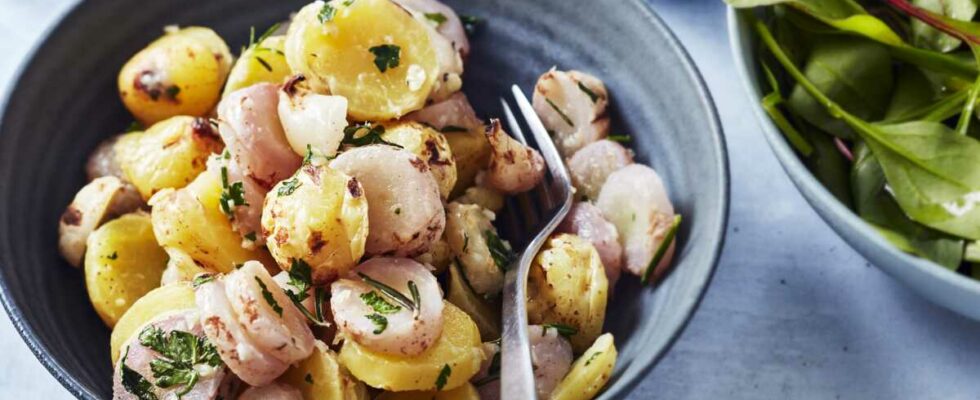Do not be fooled by appearances. Even if it is eaten cold, in thin slices, this little dented vegetable originating from South America and which resembles a radish is above all a serious competitor for the potato. Indeed, Peruvian oca (that’s its name) is rich in carbohydrates (starch) and very quickly gives the feeling of being full. It has the advantage of having much more fiber and vitamin C than potatoes. It is therefore an excellent food to facilitate transit and boost the immune system. Above all, it is much less rich in calories than its American counterpart. So there is no need to hesitate!
How to prepare Peruvian oca?
This tuber (it’s a root) with yellow, pink and red hues eaten with the skin. Just brush it well before cooking it. It remains simple to prepare but you have to choose organic. Oca is cooked sautéed in a pan, with diced bacon; roasted in the oven with broccoli for example, or prepared in puree. Caramelized with a knob of butter and honey, it goes very well with pork chops and duck breast. The slightly tangy and barely lemony taste of this cousin of clover and alfalfa (like them, it is from the Oxalidaceae family) would bring it closer to sweet potato, turnip or even sorrel. Raw, it would look more like an apple or a chestnut. To rid it of its acidity, it can be soaked in water for an hour before cooking. Consumed for millennia by the Quechua Indians of the Andean plateaus, in Peru and Bolivia, it arrived in Europe in the 19th century. For a time, it replaced the potato decimated by late blight then fell into oblivion. Brought up to date a few years ago, the one we nicknamed the “acid truffle” is one of so-called ancient vegetables. It is high time that he remembers us fondly.
How to cultivate and consume Peruvian oca?
Planted in spring, in a sunny location, Peruvian ocas are picked between mid-October and mid-November. Store them like potatoes, in a cellar or pantry after drying them in the sun for a week to make them less acidic. The green leaves of their small shrubs are also eaten and goes very well with a salad. To grow them, you can buy them in a pot to replant or plant a tuber in the ground.
€8.90 for 10 at the Ferme de Sainte Marthe.
Read also :
Paleron simmered with ancient vegetables
Can we eat sprouted potatoes?
Energy density: how to choose the most filling foods?
